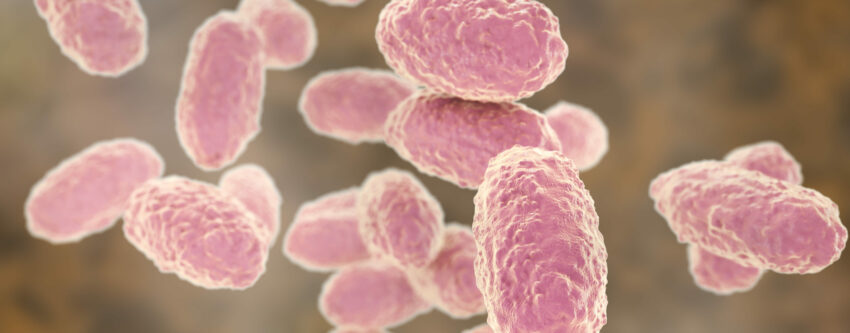 Please click here to discover L&R’s effective products for disinfection
Please click here to discover L&R’s effective products for disinfection 
Bordetella pertussis, the pathogen that most commonly causes whooping cough, is a small, gram-negative, immobile, encapsulated, aerobic rod bacterium. The toxins it produces damage the mucous membranes of the airways. The result is usually a non-specific cough that lasts for about a week. Whooping cough (pertussis) is among the most common infectious diseases of the respiratory tract worldwide. It can cause permanent damage to the lungs or bronchi. It is treated with antibiotics. These help to reduce the length of time a patient is contagious. However, antibiotics have little influence on the duration of the disease itself. Cough-suppressant drugs (antitussives) have no effect on whooping cough. Healing the ailment does not lead to permanent immunity.
Pertussis is highly contagious and is transmitted from person to person via a droplet infection, coming from coughing, sneezing or speaking. In general, the pathogen can be transmitted by close contact within a distance of up to approximately one metre. The bacteria can even colonise vaccinated people and use them as hosts. Thus, the bacteria can also be transmitted by healthy people.
The incubation period of an infection is 9 to 10 days. The disease progresses in three phases. Initially, typical cold symptoms such as rhinitis (inflammation of the mucous membrane inside the nose), coughs and a feeling of weakness appear over a period of about one to two weeks. Only rarely do patients have a fever. The subsequent dry cough usually lasts several weeks (on average six to seven weeks). It usually occurs in convulsive cough attacks. These often lead to vomiting and bringing up of viscous mucus. Loss of appetite and insomnia often follow. Complications, such as pneumonia and middle ear infections, rib and groin hernias or weight loss, can also occur. Pertussis encephalopathy is particularly dangerous, as it damages the brain and can result in convulsions, drowsiness and lead to death. After surviving the illness, paralysis, mental disorders, impaired vision and hearing or seizures may occur. Infants and newborns with whooping cough often suffer respiratory arrest, which can be fatal.
Almost all deaths and a high proportion of hospital treatment affects young, unvaccinated infants under six months of age. Patients should be placed in isolation for five days after the start of antibiotic treatment, but not more than three weeks after the onset of the disease.
Although the STIKO (German vaccination commission) recommends vaccination as a precaution, the majority of people in Germany are not vaccinated against whooping cough. Vaccination is possible for infants. However, caregivers should also be sufficiently vaccinated. Women of childbearing age should also make sure that their last refresher vaccination was no longer than ten years ago, as the probability of infecting someone in their environment is nearly 100% if the person is not protected. Physicians need to report cases of whooping cough (in Germany).
When caring for whooping cough patients, the use of hand disinfectants in accordance with standard hygiene is necessary. In addition, it is recommended to wear mouth and nose protection, a protective coat and disposable gloves when in contact with people who are infected as well as pathogen-containing material
3 to 5 days
The necessary spectrum of activity against Bordetella pertussis is: bactericidal